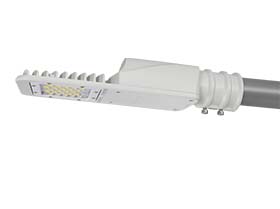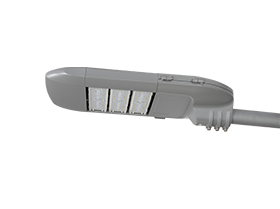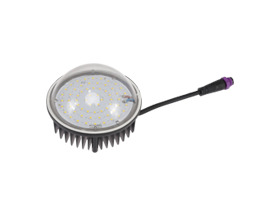Heat Dissipation Issues of New Energy LED Road Light
With the development of the market, new energy LED road lights have gradually come into our view. The heat dissipation problem of LED road lights has always been a problem that haunts us. Below, we have sorted out the relevant explanations in this aspect for you.
What problems will occur if LED road lights are in high-temperature environment for a long time?
The heat dissipation problem of the road light is urgent. Only by solving this problem can the performance of the LED road light be fully utilized. The heat dissipation not only directly affects the luminous efficiency of the LED road light when it is actually working, but also because the new energy LED road light has high brightness requirements, large heat emission, and is used in relatively harsh outdoor environments. If the heat dissipation is not good, it will directly result in rapid aging of the LED, shortening the life of LED lamps.
How to solve the heat dissipation problem of LED road lights?
In the design of new energy LED road lights, power-type LEDs themselves should have good heat dissipation, but the road light fixtures used outdoors should have the necessary level of dust and water resistance (IP rating). However, good IP protection usually hinders LED heat dissipation. Solving these two conflicting but necessary problems is an important aspect that should be focused on in road lighting design.
At present, the heat dissipation of LED bulbs can be considered before and after packaging, that is, the heat dissipation of LED chips and LED bulbs.
The heat dissipation of LED chips is mainly related to the choice of substrate and circuit technology, while the heat dissipation of finished LED bulbs is actually composed of two parts: heat conduction and heat dissipation. The heat generated by the LED chip comes out from the metal heat dissipation block, passes through the solder to the aluminum-based PCB, and then passes through the thermal conductivity glue and finally to the aluminum heat sink.
Different LED lights will use different heat conductive materials according to customer needs and costs. The main types of heat conductors used by general LED lamp manufacturers are:
Air fluid mechanics: Using the lamp shell to create convective air, this is the lowest cost way to enhance heat dissipation.
Heat pipe: Using heat pipe technology, the heat is guided from the LED chip to the fins on the outer shell. This design is usually used in road lights.
Surface radiation heat treatment: applying radiation heat dissipation coating on the surface, so that the heat is carried away from the surface of the lamp shell in a radiation way, to achieve the effect of heat dissipation.
Additionally, it is important to use an integrated aluminum die-casting heat dissipation shell. Generally, new energy LED road lights usually use a design that integrates the shell and heat sink to solve the problem of LED heat dissipation. Aluminum or aluminum alloys, copper or copper alloys, and other alloys with good thermal conductivity are generally used for this purpose.
As a new type of light source, LEDs have irreplaceable advantages in replacing incandescent lamps and fluorescent lamps. When purchasing LED road lights, we should pay attention to whether the heat dissipation is reasonable (mainly look at whether the heat dissipation aluminum of the lamp head is sufficient); what brand of LED beads the LED road light uses, the difference between good and bad is large; and pay attention to the driving power supply of the LED road light, a good power supply is both energy-saving and has a long service life, but the bad one is hard to say.
HPWINNER has been rapidly developing its business globally. Enjoying the advantages of the industry chain from design, mold, die-casting, precision processing, SMT, to lighting assembly, HPWINNER shares precise customization and rapid delivery of products and services with customers. Welcome to inquire.
 English
English  العربية
العربية  中文
中文
 Deutsch
Deutsch
 Türkçe
Türkçe

 日本語
日本語


